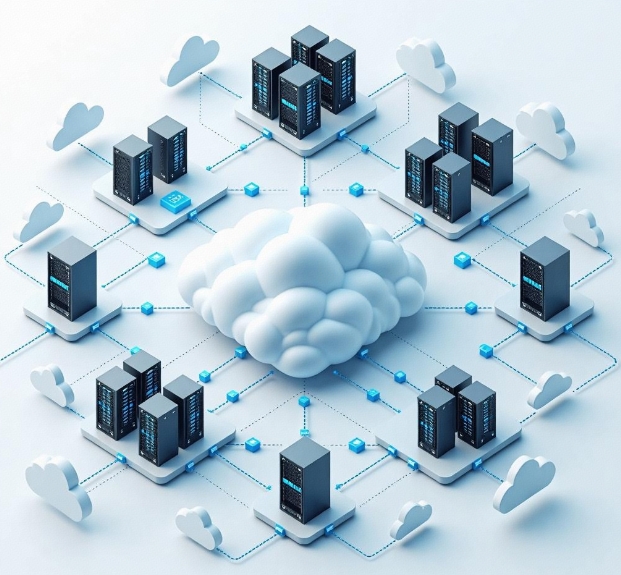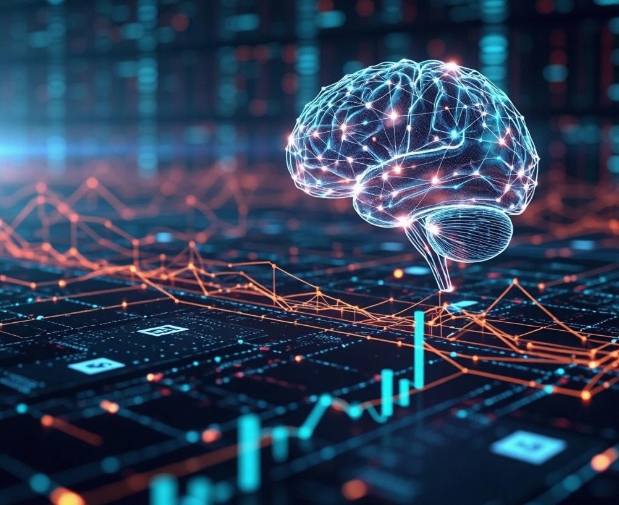Key Applications and Technical Support of Cloud Computing in the Big Data Era
- latest articles
- 1.DApp Development & Customization: Merging Diverse Market Needs with User Experience 2.Analysis of the Core Technical System in DApp Project Development 3.How to achieve cross-chain interoperability in Web3 projects? 4.How does the tokenization of points reconstruct the e-commerce ecosystem? 5.How to Set and Track Data Metrics for a Points Mall? 6.What is DApp Development? Core Concepts and Technical Analysis 7.Inventory of commonly used Web3 development tools and usage tips 8.Development of a Distribution System Integrated with Social E-commerce 9.Six Key Steps for Businesses to Build a Points Mall System 10.What is DApp Development? A Comprehensive Guide from Concept to Implementation
- Popular Articles
- 1.Future Trends and Technology Predictions for APP Development in 2025 2.Analysis of the DeFi Ecosystem: How Developers Can Participate in Decentralized Finance Innovation 3.From Zero to One: How PI Mall Revolutionizes the Traditional E-commerce Model 4.DAPP Development | Best Practices for Professional Customization and Rapid Launch 5.Recommended by the Web3 developer community: the most noteworthy forums and resources 6.From Cloud Computing to Computing Power Leasing: Building a Flexible and Scalable Computing Resource Platform 7.How to Develop a Successful Douyin Mini Program: Technical Architecture and Best Practices 8.Shared Bike System APP: The Convenient Choice in the Era of Smart Travel 9.How to Create a Successful Dating App: From Needs Analysis to User Experience Design 10.From Design to Development: The Complete Process of Bringing an APP Idea to Life
With the continuous advancement of the information age, the generation and storage of data have become increasingly massive, gradually leading human society into the "Big Data Era." In this context, cloud computing has emerged as a key technology for addressing the storage, processing, and analysis of big data. Cloud computing not only provides robust technical support for big data but also serves as a continuous driving force for the development of various industries. This article will explore the critical applications and technical support of cloud computing in the big data era, analyze how cloud computing drives the transformation of big data technologies, and look ahead to future development trends.
I. Overview of Cloud Computing
Cloud computing, as the name suggests, is a technology that provides computing resources over the internet. It virtualizes and centralizes infrastructure resources such as computing, storage, and networking, offering on-demand services. Key features of cloud computing include elastic scalability, resource sharing, pay-as-you-go billing, and cost reduction, enabling individuals and businesses to access computing resources via the internet without investing in expensive hardware or maintenance personnel. Cloud computing services are primarily categorized into three models: Infrastructure as a Service (IaaS), Platform as a Service (PaaS), and Software as a Service (SaaS).
The rapid development of cloud computing has provided unique advantages for processing and analyzing big data. Big data typically involves massive, diverse, and rapidly changing datasets, posing significant challenges to traditional IT infrastructure. By offering efficient and flexible resource allocation, cloud computing effectively supports the processing demands of big data.
II. Challenges and Opportunities in the Big Data Era
In the big data era, the scale, variety, and velocity of data far exceed the capacity of traditional computing models. Big data includes not only structured data but also unstructured and semi-structured data from diverse sources such as social media, sensors, log files, images, and audio. Effectively storing, processing, and analyzing these vast datasets has become a major challenge for various industries.
However, big data also presents immense opportunities. Leveraging big data, businesses can gain deeper insights into market demands, optimize operational management, and improve decision-making efficiency. Governments can use big data to enhance public services and social governance. Researchers can accelerate scientific progress through big data analysis.
III. Key Applications of Cloud Computing in the Big Data Era
Data Storage and Management
One of the core characteristics of big data is its massive volume, which traditional storage methods struggle to accommodate. Cloud computing's distributed storage technology enables data to be stored and managed across multiple servers, overcoming the bottlenecks of big data storage.
Cloud storage services provide on-demand storage space for businesses and individuals with high scalability. Users can dynamically increase storage capacity as needed, avoiding overinvestment and resource waste. Additionally, the high availability and fault tolerance mechanisms of cloud storage ensure data security and reliability.
Data Processing and Computing
Another characteristic of big data is the complexity of data processing. Traditional computing models often fail to meet the real-time processing demands of large-scale data. Cloud computing provides powerful computing resources, freeing big data processing from the limitations of single-machine performance. Through cloud computing, users can perform distributed computing and parallel processing on virtually unlimited computing resources, significantly improving data processing efficiency.
For example, distributed computing frameworks like Hadoop and Spark have been widely adopted on cloud platforms. By splitting big data into smaller chunks and performing parallel computations across multiple nodes, they effectively enhance computational performance. This makes cloud computing an indispensable technical foundation for processing, analyzing, and mining big data.
Big Data Analytics and Artificial Intelligence
The true value of big data lies in its analysis and mining. Leveraging the high-performance computing and large-scale storage capabilities provided by cloud platforms, businesses and organizations can conduct in-depth data analysis to uncover underlying patterns and trends, enabling more precise decision-making.
Supported by cloud computing, artificial intelligence (AI) technologies have also advanced rapidly. By training on big data, AI models can continuously optimize, achieving automated decision-making and prediction. Technologies such as machine learning and deep learning have achieved significant applications in industries like finance, healthcare, and retail.
Data Security and Privacy Protection
The widespread application of big data, especially in cloud computing environments, has raised serious concerns about data security and privacy protection. Ensuring data confidentiality, integrity, and availability is a critical challenge for cloud computing.
To address this challenge, cloud computing providers typically implement a range of security measures, such as data encryption, identity authentication, and access control. Additionally, cloud service providers must conduct regular security audits and vulnerability fixes to ensure platform security. Data backup and disaster recovery systems are also essential for safeguarding data security.
IV. Cloud Computing Technical Support
Virtualization Technology
Virtualization technology is one of the core technologies of cloud computing. Through virtualization, the resources of physical servers can be partitioned into multiple virtual machines, each capable of running different operating systems and applications independently. This technology enables more flexible and efficient use of computing resources, allowing users to adjust resource configurations as needed.
Distributed Computing and Storage
Distributed computing and storage technologies enable cloud computing to support large-scale data processing and storage. Distributed computing breaks tasks into multiple subtasks, processed in parallel across multiple computing nodes, significantly enhancing processing speed and efficiency. Distributed storage disperses data across different physical devices, ensuring high availability and reliability.
Containerization and Microservices Architecture
Containerization technology ensures that applications remain consistent across different environments, facilitating rapid deployment and scaling. Microservices architecture breaks applications into smaller, independent services, each capable of running and scaling independently. Containerization and microservices architecture make cloud computing platforms more flexible and efficient in the big data era.
Automation and Elastic Scaling
Elastic scaling is a key feature of cloud computing. Through automated management tools, cloud computing platforms can dynamically adjust resource allocation based on business needs, ensuring efficient system operation. When data volume and computing demands increase, the cloud platform can dynamically scale up computing and storage resources, and scale them down when demands decrease, achieving optimal resource utilization.
V. Future Development Trends of Cloud Computing and Big Data
The Rise of Edge Computing
With the development of the Internet of Things (IoT), data generation is shifting from centralized servers to edge devices. Edge computing, as an emerging computing paradigm, moves data processing tasks closer to the data source, reducing latency and bandwidth pressure. The integration of edge computing and cloud computing will further drive the development of big data and AI.
Deep Integration of Artificial Intelligence and Cloud Computing
In the future, cloud computing will deeply integrate with artificial intelligence, promoting the automation and intelligence of big data analytics. Leveraging the powerful computing capabilities of cloud platforms, AI can process and analyze big data more efficiently, achieving more accurate predictions and decisions.
Enhanced Data Privacy and Security
As data privacy protection laws and regulations continue to improve, cloud computing will place greater emphasis on compliance and transparency in data security. Future cloud computing platforms will adopt more advanced encryption technologies to ensure data privacy and security.
Conclusion
The application of cloud computing in the big data era has penetrated various industries, providing robust technical support for the storage, processing, and analysis of big data. Through technologies such as virtualization, distributed computing, and containerization, cloud computing has not only significantly improved the efficiency and accuracy of big data processing but also reduced IT costs for businesses. In the future, with the rapid development of emerging technologies like edge computing and artificial intelligence, cloud computing will play an increasingly vital role in the field of big data.
The widespread adoption of cloud computing has not only driven technological progress but also brought about numerous innovations and transformations to society. As technology continues to evolve and mature, cloud computing will undoubtedly continue to play a pivotal role in the wave of the big data era.
-

Applications and Challenges of Cloud Computing in the Internet of Things (IoT)
With the continuous advancement of information technology, cloud computing and t···
-

Integration of Cloud Computing and Artificial Intelligence: Enhancing Intelligent Applications
With the rapid advancement of technology, cloud computing and artificial intelli···
-

Data Security and Privacy Protection in Cloud Computing Applications
With the continuous advancement of information technology and the rapid developm···

 Blockchain
Blockchain












